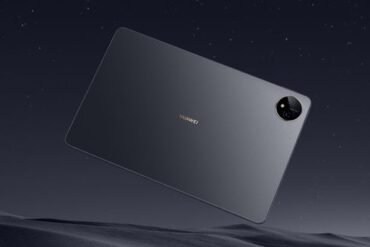Graphics Card VRAM Bus Width: Impact on Performance
Table of Contents
Introduction: Understanding Graphics Card VRAM
When it comes to choosing a graphics card for your computer, one of the key factors to consider is the amount of VRAM it has. VRAM, or Video Random Access Memory, is a type of memory specifically designed for storing and processing visual data.
The VRAM on a graphics card serves as a buffer between the CPU and the GPU, allowing for faster and more efficient rendering of images and videos. It stores texture data, frame buffers, and other graphics-related information, enabling the GPU to quickly access the data it needs to create images on your display.
Having an adequate amount of VRAM is crucial for running demanding applications and games, especially those with high-resolution textures and complex graphics. Insufficient VRAM can lead to performance issues, such as frame rate drops, stuttering, and even crashes.
However, it’s not just the amount of VRAM that matters – the bus width of the VRAM also plays a significant role in determining the performance of a graphics card. The bus width refers to the number of memory channels and the width of each channel that connects the VRAM to the GPU.
A wider bus width allows for a higher data transfer rate between the VRAM and the GPU, resulting in improved performance. Graphics cards with wider bus widths can handle larger amounts of data more efficiently, which is especially beneficial when working with high-resolution textures or running graphics-intensive applications.
On the other hand, a narrower bus width can limit the amount of data that can be transferred at a time, potentially bottlenecking the performance of the graphics card. This can lead to slower rendering speeds and reduced overall performance, particularly in scenarios where the VRAM is frequently accessed or when running graphics-intensive tasks.
In summary, understanding the role of VRAM and its bus width is crucial in evaluating the performance capabilities of a graphics card. A higher amount of VRAM and a wider bus width generally result in improved performance when it comes to handling demanding graphics tasks.
However, it’s important to consider other factors as well, such as the GPU architecture, clock speeds, and overall system configuration, as they also contribute to the overall performance of a graphics card.
Importance of Bus Width
The bus width of a graphics card’s VRAM (Video Random Access Memory) is a crucial factor that directly impacts its overall performance. The bus width refers to the number of pathways or lanes through which data can travel between the GPU (Graphics Processing Unit) and the VRAM. A wider bus width allows for more data to be transferred simultaneously, resulting in enhanced performance and improved graphics rendering capabilities.
Here are some key points highlighting the significance of bus width:
- Bandwidth: A wider bus width enables a higher bandwidth, which refers to the amount of data that can be transferred per unit of time. A larger bandwidth allows for faster data access and reduces bottlenecks, resulting in smoother and more responsive graphics.
- Higher Memory Capacity: A wider bus width allows for larger amounts of VRAM to be utilized effectively. This is particularly important for gaming or graphic-intensive tasks that require storing and accessing large textures, models, or frame buffers. With a wider bus width, the graphics card can handle more data, reducing the need for frequent data transfers and improving overall performance.
- Multi-Monitor Support: A wider bus width is beneficial for systems utilizing multiple monitors or running high-resolution displays. The increased bandwidth helps in efficiently driving multiple screens simultaneously, ensuring smooth and seamless operation across all displays.
- Texture Filtering and Anti-Aliasing: The bus width impacts the performance of texture filtering and anti-aliasing techniques, which are essential for enhancing image quality by reducing jagged edges and improving overall clarity. A wider bus width allows for quicker access to texture data, resulting in improved rendering quality and smoother graphics.
- Future-Proofing: Opting for a graphics card with a wider bus width provides a certain level of future-proofing. As games and applications continue to demand more graphical power, having a higher bus width ensures that the graphics card can handle the increased data requirements, allowing for a longer lifespan and better support for upcoming technologies.
In conclusion, the bus width of a graphics card’s VRAM is a critical aspect that directly affects its performance and capabilities. A wider bus width offers higher bandwidth, increased memory capacity, better multi-monitor support, improved texture filtering, and future-proofing. When choosing a graphics card, it is important to consider the bus width alongside other specifications to ensure optimal performance and compatibility for your specific needs.
Effects on Gaming Performance
When it comes to gaming, the graphics card plays a crucial role in determining the performance and visual quality of your gaming experience. One important factor to consider is the VRAM bus width, which can have a significant impact on gaming performance. Let’s explore how the VRAM bus width affects gaming performance:
- Bandwidth: The VRAM bus width determines the amount of data that can be transferred between the graphics card and the VRAM in a given time. A wider bus width allows for faster data transfer, resulting in improved performance and reduced loading times. This is particularly important for games with large textures or high-resolution graphics.
- Frame Rate: A wider VRAM bus width can help maintain a stable frame rate during gameplay. When the graphics card needs to access VRAM frequently to load textures or render complex scenes, a narrow bus width can cause delays and result in dropped frames, leading to a choppy gaming experience. A wider bus width ensures smoother gameplay and a more consistent frame rate.
- Texture Quality: The VRAM bus width affects the ability of the graphics card to store and access high-quality textures. A wider bus width allows for more detailed and higher-resolution textures to be loaded into VRAM, resulting in improved texture quality and overall visual fidelity. This is especially noticeable in games that rely heavily on detailed textures, such as open-world or realistic simulations.
- Resolution and Multimonitor Setups: Gamers who play at higher resolutions or use multiple monitors may benefit from a wider VRAM bus width. With more pixels to render, a wider bus width enables the graphics card to handle the increased data transfer requirements, ensuring smooth performance and preventing potential bottlenecks.
It’s important to note that the VRAM bus width is just one aspect of a graphics card’s overall performance. Other factors, such as the GPU architecture, clock speed, and memory speed, also play a significant role. For optimal gaming performance, it’s crucial to consider these factors in conjunction with the VRAM bus width when choosing a graphics card.
Considerations for Upgrading
When considering upgrading your graphics card VRAM bus width, there are several factors to take into account. Here are some important considerations to help you make an informed decision:
- Performance Needs: Assess your performance needs and the specific tasks you use your computer for. If you’re a casual gamer or use your computer for basic tasks like web browsing and document editing, a higher VRAM bus width may not be necessary. However, if you’re a professional gamer or work with graphics-intensive applications, upgrading to a graphics card with a wider VRAM bus can significantly improve performance.
- Compatibility: Ensure that your motherboard and power supply can support a graphics card with a wider VRAM bus. Check the specifications of your motherboard to see if it has the necessary expansion slots, such as PCI Express x16, and ensure that your power supply has the required wattage to handle the new graphics card.
- Budget: Consider your budget for upgrading. Graphics cards with wider VRAM bus widths tend to be more expensive. Determine how much you are willing to spend and look for options that offer the best performance within your budget.
- Future-Proofing: Think about your future needs. If you plan on upgrading other components of your system in the near future, such as your monitor or CPU, it may be worth investing in a graphics card with a wider VRAM bus to ensure compatibility and optimal performance down the line.
- Research and Reviews: Do thorough research and read reviews to find the best graphics card with a wider VRAM bus width. Look for benchmarks and performance comparisons to see how different models perform in real-world scenarios. This will help you make an informed decision based on your specific requirements.
Upgrading your graphics card VRAM bus width can have a significant impact on overall performance, especially for gamers and professionals working with graphics-intensive applications. By considering factors such as performance needs, compatibility, budget, future-proofing, and conducting thorough research, you can make the right choice when upgrading your graphics card.
Conclusion: Maximizing Graphics Performance
In conclusion, the graphics card VRAM bus width plays a crucial role in determining the overall performance and efficiency of a graphics card. A wider bus width allows for faster communication between the GPU and the VRAM, resulting in improved graphics rendering, smoother gameplay, and reduced latency.
When choosing a graphics card, it is important to consider the VRAM bus width along with other specifications. While a higher bus width is generally desirable, it is not the sole factor determining performance. The overall architecture, memory speed, and GPU power are also key considerations.
Here are some key takeaways to maximize graphics performance:
- Opt for a graphics card with a larger VRAM bus width to allow for faster data transfer.
- Consider the overall architecture and power of the GPU along with the bus width.
- Ensure the graphics card has sufficient VRAM capacity for your specific gaming or professional needs.
- Pair the graphics card with a compatible and fast memory interface for optimal performance.
- Regularly update graphics drivers to benefit from performance optimizations and bug fixes.
By understanding the impact of VRAM bus width on graphics performance, you can make informed decisions when selecting a graphics card for your gaming, design, or professional needs. Remember to consider your specific requirements and budget, as well as other important factors such as memory speed, GPU power, and overall architecture to fully optimize your graphics performance.


























